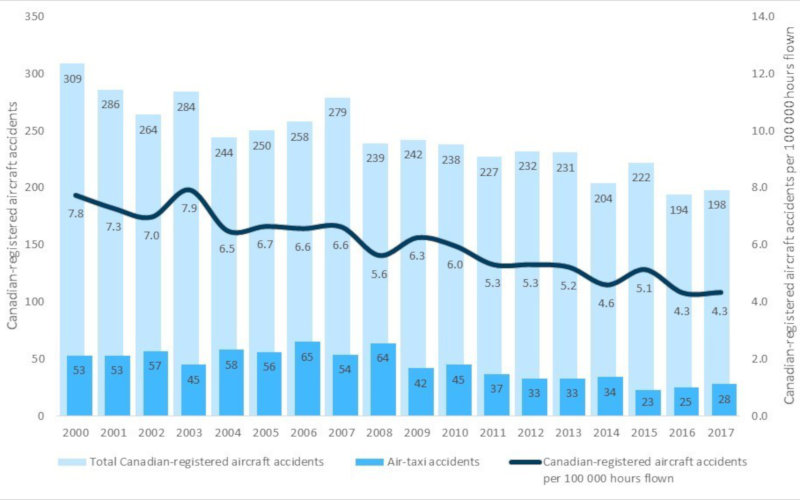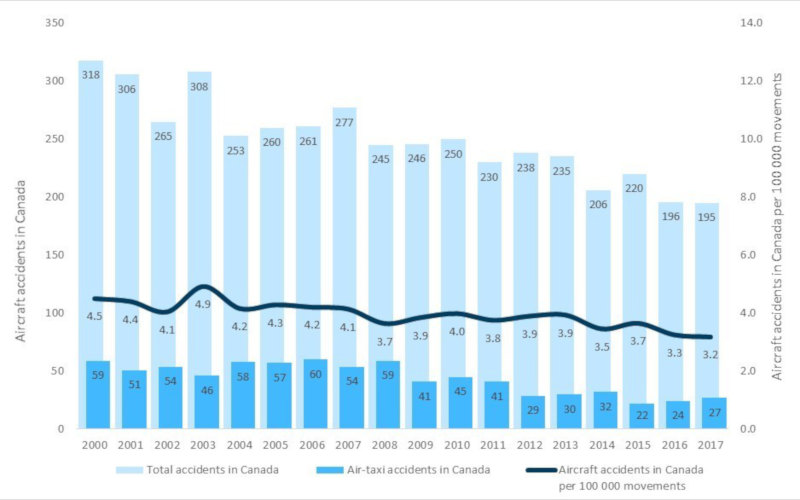
Features
Safety
TSB releases air-taxi safety report
November 11, 2019 By Wings Staff
 Total number of accidents and fatalities involving Canadian-registered aircraft by operator type, 2000 to 2017. (Source: TSB)
Total number of accidents and fatalities involving Canadian-registered aircraft by operator type, 2000 to 2017. (Source: TSB) The Transportation Safety Board of Canada (TSB) on November 7 published its Safety Issue Investigation report called Raising the bar on safety: Reducing the risks associated with air-taxi operations in Canada.
TSB launched this in-depth Safety Issues Investigation (SII) back in May 2015 to identify persistent underlying safety issues in the air taxi sector, which is regulated by Canadian Aviation Regulations (CARs) Part 703. This sector over the past 15 years has seen 229 deaths, which represent 62 per cent of all commercial aviation fatalities.
As a result of its investigation, the new report from TSB includes four new recommendations aimed at improving air-taxi safety, which continues to have more accidents, causing more fatalities, than all other areas of commercial aviation in Canada combined.
“We found that accidents in this sector of aviation boil down to two underlying factors: The acceptance of unsafe practices and the inadequate management of operational hazards,” said Kathy Fox, chair of the TSB. “And although overall, commercial aviation in Canada has shown improved safety performance over the past 10 years, air-taxi operations remain at higher risk.”
Air-taxi operations in Canada involve aircraft (excluding jets) and helicopters that, by regulation, carry fewer than 10 passengers. TSB explains these aircraft provide a variety of services throughout Canada, often in remote environments with less infrastructure than is available at large airports, and where access to basic weather information and the latest technology may be limited. “It is this unique operating context – the diversity of both operations and environment – that exposes air-taxi companies to very different risks,” said Fox.
Glen Whitney, who served as TSB’s investigator-in-charge of the report notes air-taxi operators must balance several competing pressures. “When one of or more of these pressures is not adequately managed, it doesn’t always lead to an accident, but it almost always leads to a reduced safety margin,” he said.
To address this problem, the TSB recommends that operators, their clients, and Transport Canada (TC) work together to eliminate the acceptance of unsafe practices and to promote both proactive safety management and a positive safety culture. The TSB also recommends that TC close known safety gaps in the regulations, and require all commercial operators to collect data on hours flown and aircraft movements by type of operation, in order to measure whether risk mitigation measures are effective.

